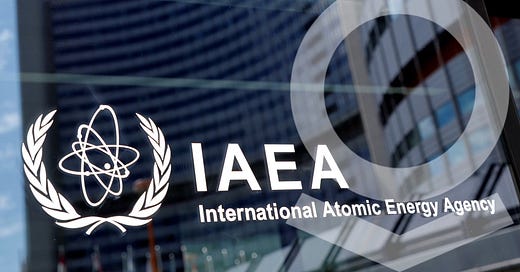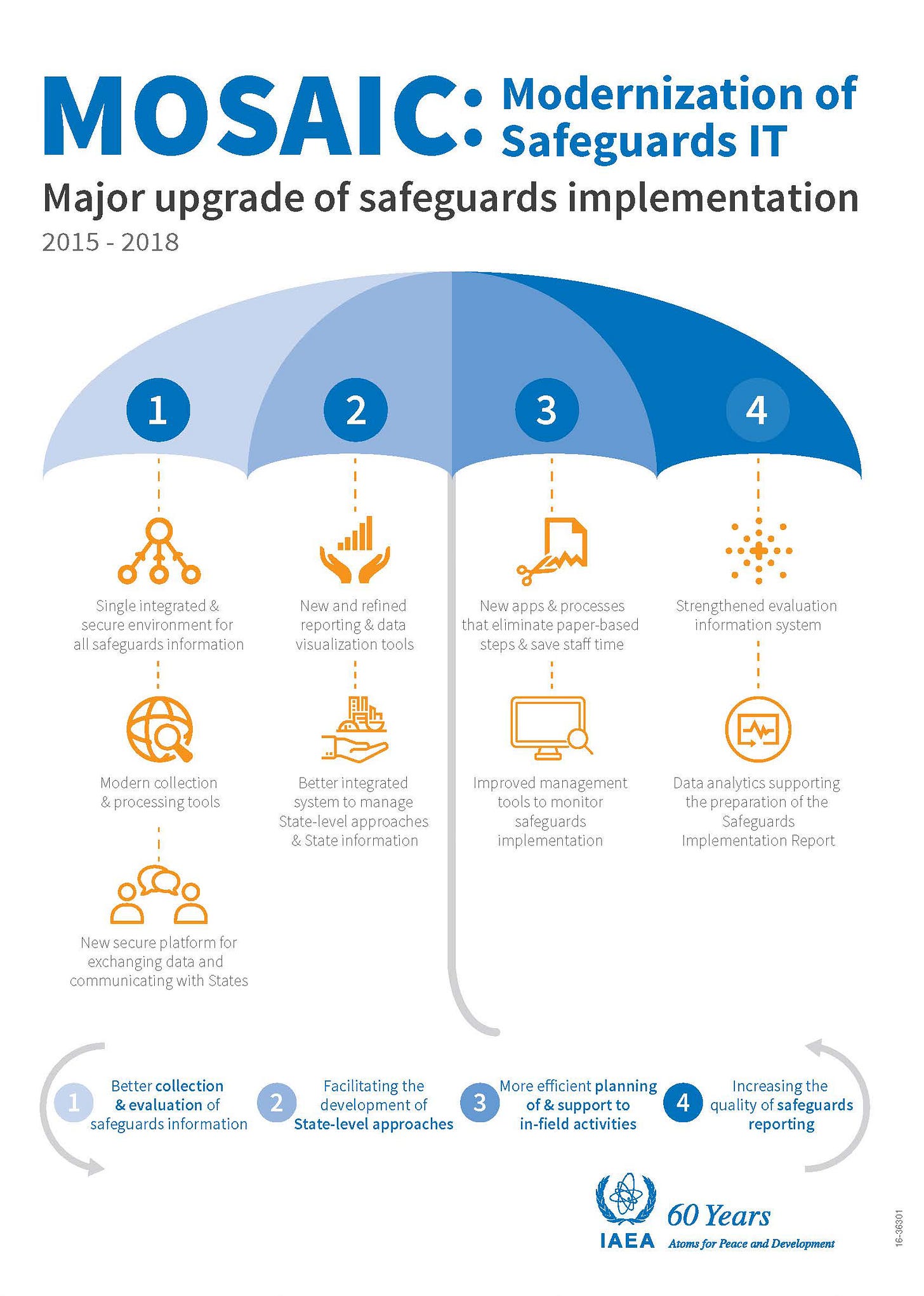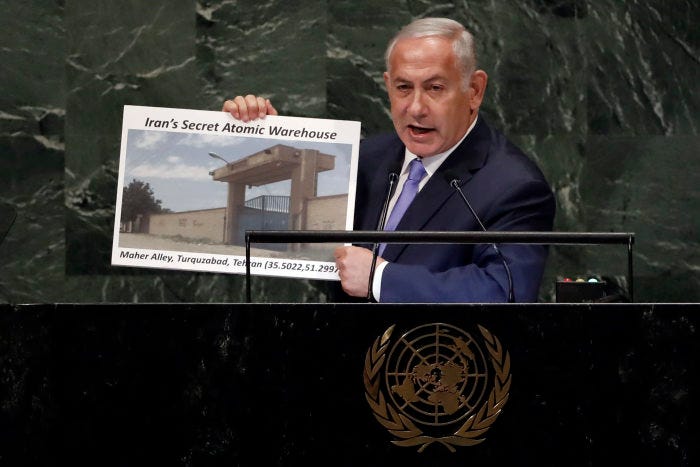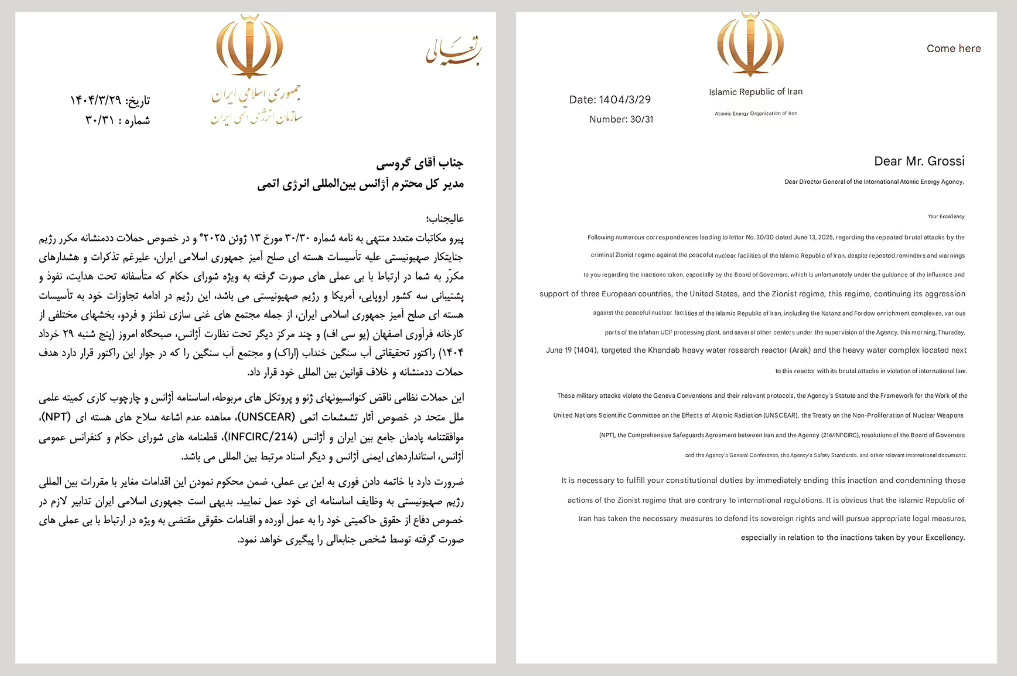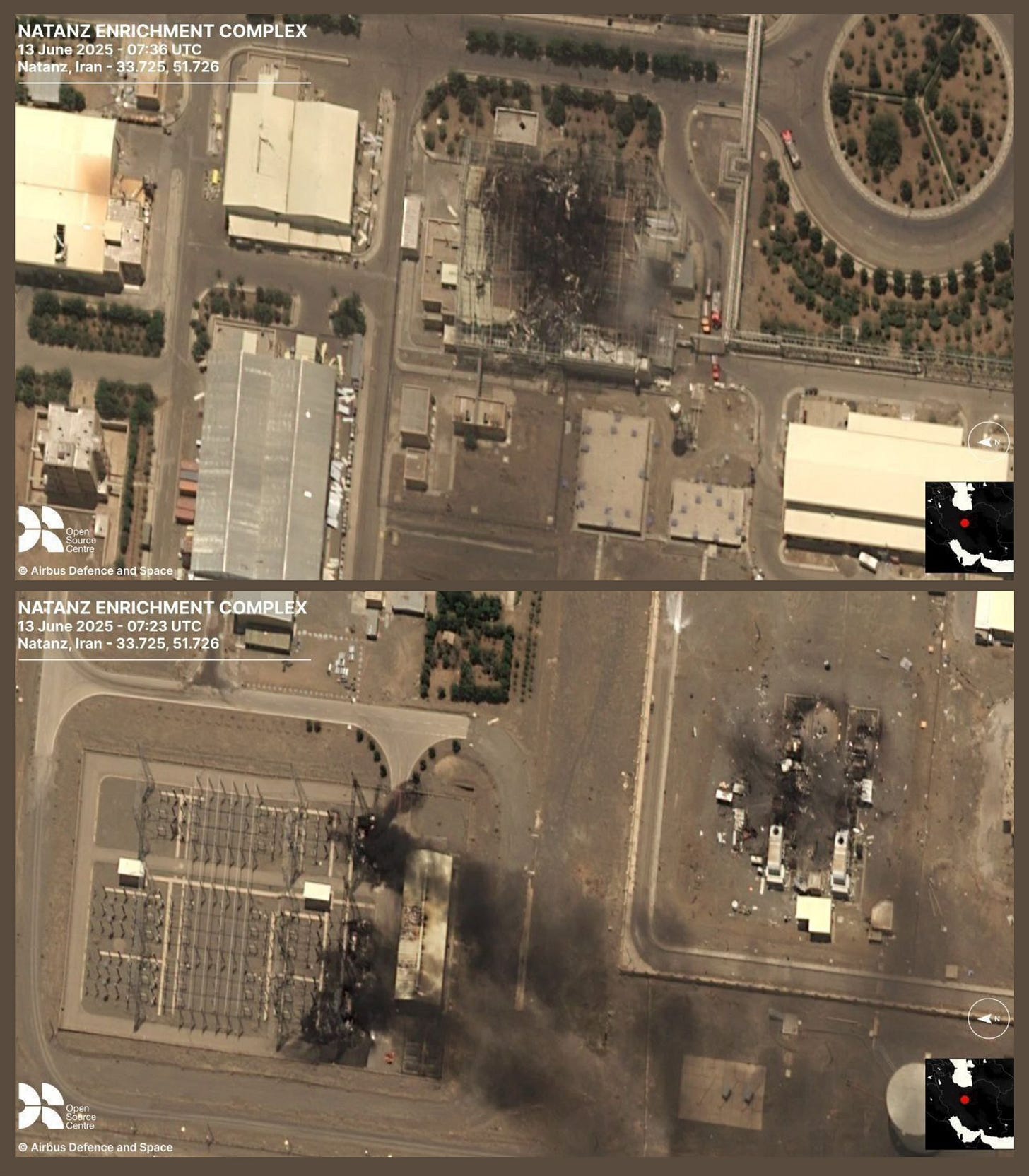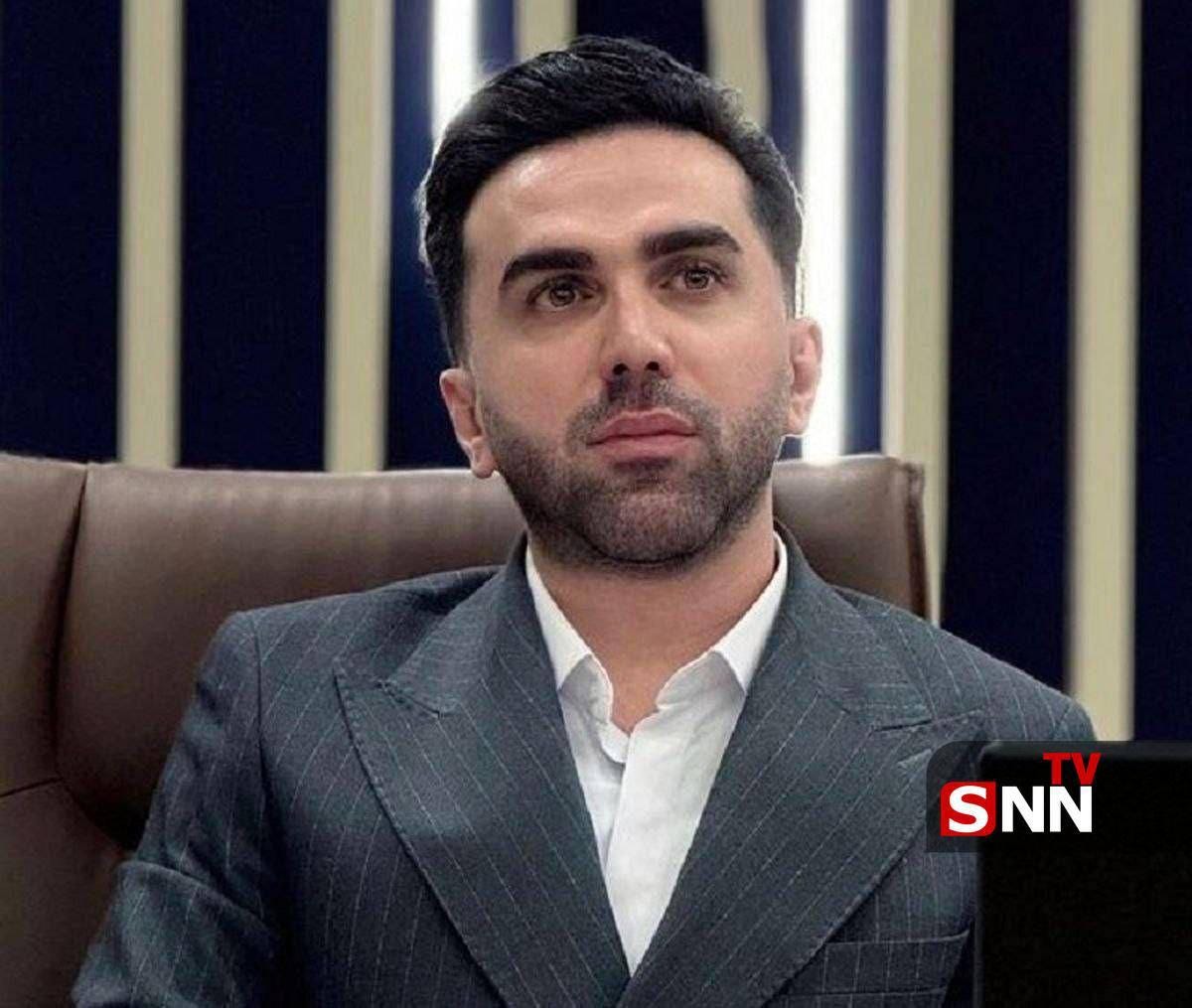The AI That Triggered a War: How Palantir and the IAEA Fueled Israel’s Strike on Iran
A $50M software built for counterinsurgency now steers nuclear diplomacy... and may have lit the fuse for a regional war.
On June 12, 2025, Israel launched “Operation Rising Lion,” a sweeping air campaign that bombed Iran’s Natanz nuclear facility, scorched Esfahan, and attempted to breach the fortified Fordow bunker. Hundreds died—among them IRGC commander Hossein Salami, nuclear scientist Fereydoon Abbasi, and numerous civilians. Prime Minister Benjamin Netanyahu called it a strike on “the heart” of Iran’s nuclear ambitions. President Donald Trump, backed by CENTCOM’s Gen. Michael Kurilla, warned of “brutal” consequences, citing a May 31 IAEA report that flagged 409kg of 60% enriched uranium—allegedly enough for nine bombs if refined.
“The IAEA resolution gave Israel a pretext to attack our facilities.” — Iranian Foreign Minister Abbas Araqchi
But what if the intelligence fueling this war came not from Mossad or Pentagon satellites but from a UN agency’s software? Since 2015, the IAEA has relied on Palantir’s Mosaic platform, a $50-million AI system that sifts 400 million data points—satellite imagery, social media, personnel logs—to predict nuclear threats. On June 12, Iran leaked documents it claimed showed IAEA chief Rafael Grossi shared Mosaic outputs with Israel, effectively turning the agency into a “tool for aggression.” The charge echoes a pattern: prior to 2025, Mosaic data helped shape sanctions and even UN aid decisions despite risks of bias.
Palantir, co-founded by Trump ally Peter Thiel, powers IDF targeting in Gaza and Ukraine’s battlefield AI. Its IAEA role, meant to ensure compliance, now teeters toward militarization. As Iran halts monitoring and threatens to expose Israel’s nuclear secrets at Soreq, the stakes are apocalyptic. This investigation asks how Mosaic became a war pretext, why Israel needed a cover story, and whether privatized AI now threatens global peace.
Palantir’s Quiet Integration into the IAEA
Since 2015, the IAEA has quietly used Palantir’s Mosaic platform to monitor nuclear activities across Iran. The software—originally built for U.S. counterinsurgency—ingests hundreds of millions of data points, including satellite imagery, social media, trade flows, and metadata, to map sites, identify personnel links, and infer nuclear “intent.” By 2018, Mosaic had processed more than 400 million discrete data objects and helped facilitate over 60 unannounced inspections of Iranian sites under the Joint Comprehensive Plan of Action (JCPOA). These outputs were incorporated into formal IAEA safeguards reports and widely accepted by UN member states and nonproliferation regimes as credible, evidence-based assessments.
The IAEA never publicly debated Palantir’s involvement. In 2018, it quietly renewed a $50 million contract for Mosaic, cementing the firm’s role as a key tool of global nuclear surveillance. The company itself touts the partnership on its website, calling Mosaic “a cornerstone of international nuclear safeguards.” But unlike traditional monitoring tools, Mosaic is not a passive system. It runs predictive analytics—assessing not just what a state has done, but what it might do—based on behavioral models derived from counterterrorism doctrine. This feature was designed for battlefield targeting, not legal compliance.
“It’s like Minority Report for uranium,” an IAEA official quipped, describing Mosaic’s predictive power.
That distinction has blurred. Palantir’s software played a central role in identifying suspected Iranian facilities at Turquzabad and Marivan—sites later cited in both UN deliberations and Israeli public accusations. These assessments, derived from software designed for warzones, were presented by a neutral UN body as hard intelligence. Some nuclear experts raised alarms. “Predictive AI and safeguards don’t mix,” a former senior IAEA analyst said in 2023. “It turns monitoring into pretext.”
The problem? Mosaic’s lineage screams bias. Funded by In-Q-Tel, the CIA’s venture arm, Palantir powers IDF targeting in Gaza and Ukraine’s drone strikes. Mosaic’s black-box algorithms, unauditable and proprietary, risk turning the IAEA from neutral inspector into a data proxy for preemptive war. As we’ll explore with Fordow’s role, this software may have already crossed that line, threatening the Non-Proliferation Treaty it was meant to uphold.
Mosaic isn’t just a database—it’s a strategic weapon. Palantir’s promotional materials boast it helps “visualize and prepare for escalations,” mapping sites, tagging nuclear experts, and analyzing regional threats. This power materialized in the IAEA’s May 31, 2025, report, declaring Iran’s 408.6kg of 60% enriched uranium, a non-compliance breach at sites like Lavisan-Shian and Turquzabad. On June 6, a U.S.-led IAEA resolution censured Iran 19-3, the first in 20 years, prompting Tehran’s cry of “political theater.” Six days later, Israel struck.
The “Fordow Threat” and the Narrative of Imminent Danger
When Israel’s “Operation Rising Lion” jets roared over Fordow’s mountain bunker on June 12, they targeted the heart of Iran’s nuclear defiance, or so the narrative went. The IAEA’s May 31, 2025, report had sounded the alarm: Iran’s 408.6kg of 60% enriched uranium, with 166.6kg at Fordow, could yield “nine nuclear bombs” if refined, raising fears of “diversion” at undeclared sites like Turquzabad. This report, powered by Palantir’s Mosaic platform, fueled a June 6 censure and Israel’s strikes, killing hundreds, including scientist Fereydoon Abbasi. But was Fordow’s threat real, or a software-driven pretext?
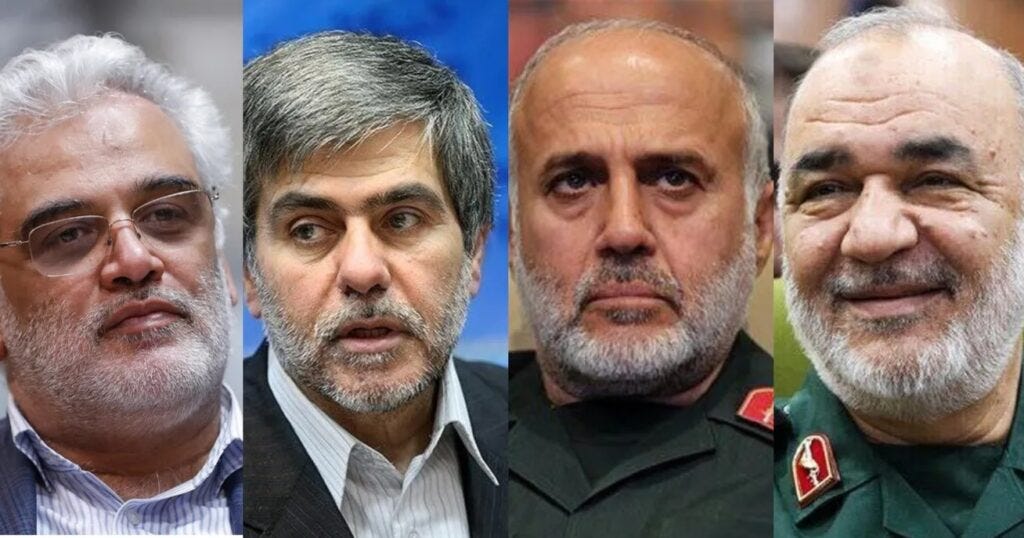
The IAEA gave Israel a pretext to attack our facilities. — Iran’s Foreign Minister Abbas Araqchi
Mosaic, crunching 400 million data points since 2015, mapped Fordow’s centrifuge cascades and satellite imagery, flagging anomalies as threats. Its AI, built for counterinsurgency, predicts intent—perfect for crafting a “nine-bomb” narrative. The May 31 report cited undeclared traces at Lavisan-Shian and Turquzabad, echoing 2018 when Mosaic’s findings sparked sanctions despite Iran’s “sabotage” claims. Iran’s nuclear chief, Behrouz Kamalvandi, alleged in 2025 that Turquzabad’s coordinates were “planted,” suggesting fabricated evidence. Iran’s June 12 leak, claiming Rafael Grossi shared Mosaic data with Israel, deepened suspicions.
Grossi’s June 18 CNN admission—“no proof of a systematic weapons program”—undermined the urgency, hinting Mosaic’s outputs were overstated. Pre-2025, Mosaic’s 2016-2018 Turquzabad data drove UN sanctions, trusted as evidence despite flaws. The UN’s World Food Programme similarly relied on Mosaic for 2019-2023 aid decisions, showing Palantir’s sway. In 2025, Israel seized on Mosaic’s Fordow alerts, with Netanyahu claiming Iran was “months from a bomb.” Yet, Fordow’s stockpile grew steadily, not suddenly, suggesting a manufactured crisis.
Mosaic’s black-box algorithms, prone to false positives as Ali Vaez warned, risk turning noise into war. Its Gaza and Ukraine roles, mirror its IAEA use, blurring compliance with combat. If Israel exploited Mosaic’s data, as Iran’s leak alleges, the IAEA became an unwitting war vector.
From Compliance to Casus Belli
When Israel’s jets screamed over Natanz, attempting to obliterate centrifuges in “Operation Rising Lion,” the world’s eyes turned to a UN report that lit the fuse. The IAEA’s May 31, 2025, report (GOV/2025/25) declared Iran’s 409kg of 60% enriched uranium enough for “nine nuclear bombs” if refined, citing undeclared traces at Lavisan-Shian, Turquzabad, and two other sites. Though no weapons program was proven, the report’s warning of “potential diversion” fueled a diplomatic firestorm.
“The IAEA resolution provided Israel a pretext to attack,” Iran’s Foreign Minister Abbas Araqchi charged.
The IAEA’s May 31 report was driven by data from Palantir’s Mosaic platform. Installed at IAEA headquarters in Vienna since 2015, Mosaic’s AI analyzes 400 million+ data points to produce predictive models of nuclear behavior. This includes simulations of centrifuge capacity, flagged shipment logs, tagged personnel, and cross-referenced satellite imagery. Its assessments directly shaped the censure resolution passed 19–3 on June 6—the first formal rebuke of Iran since the JCPOA era.
Iran immediately denounced the resolution as “political theater.” On June 12, as missiles fell, Iranian state media released documents alleging IAEA Director General Rafael Grossi had shared Mosaic outputs with Israeli security officials. The leak cited a U.S.-based “pro-Israel panel” that reportedly received advance data on Fordow and Turquzabad. While unverified, the documents echoed Iran’s 2018 complaint that Mosaic-fueled findings—then regarding Turquzabad—had made their way into Israeli hands.
Grossi’s own public statements muddied the waters. In a CNN interview on June 18, he clarified: “We had no proof of a systematic weapons program.” That admission—days after Israel’s strikes undermined the alarmist tone of the May 31 report. It raised a crucial question: if there was no evidence of a bomb, why was the IAEA sounding like an intelligence agency?
The answer lies in Mosaic’s design. Originally built to identify insurgent activity in Iraq and Afghanistan, Mosaic infers hostile intent from indirect indicators—metadata, behavioral patterns, signal traffic—not from confirmed evidence. When repurposed for nuclear oversight, this logic translates correlation into alarm. That Mosaic also powers IDF targeting systems in Gaza and Ukraine makes its presence inside the IAEA all the more explosive.
Privatized algorithms are not bound by the UN Charter or the Non-Proliferation Treaty. They produce conclusions without transparency, and their errors carry consequences. In this case, they helped frame a diplomatic rupture—and perhaps a war.
By June 19, Iran escalated: releasing a letter accusing Grossi of violating international law, aiding aggression, and fueling a war of preemption. It cited Mosaic data as the spark and warned of legal action under the Geneva Conventions. With inspections halted since June 14, and with Iran threatening to expose Israel’s nuclear program at Soreq, the safeguards regime is unraveling.
Why Israel Needed a Cover Story
When Israel’s “Operation Rising Lion” targeted Iranian sites it
June it wasn’t just about uranium. Israel’s strikes, justified by an IAEA report flagging Iran’s 409kg of 60% enriched uranium as a “nine-bomb” threat, aimed at a deeper target: Iran’s technological future, fusing nuclear potential with AI-driven military modernization. But why cloak this preemption in a UN agency’s data?
“Iran’s nuclear program is an existential threat,” Benjamin Netanyahu declared in, echoing the hundreds of times he’s said it over the years.
Israel’s motive wasn’t new. Since 2018, Netanyahu’s UN speeches on Iran’s “secret warehouse” pushed for preemptive strikes, framing Iran’s nuclear ambitions as apocalyptic. Yet, the stockpile, growing for months, lacked sudden urgency. The shift came with the IAEA’s report and June 6 censure backed 19-3 by the U.S. and allies, which lent Israel a “defensive” facade for “Rising Lion.” Mosaic’s AI, sifting millions of data points, flagged undeclared sites like Turquzabad, fueling the report’s “diversion” fears—echoing 2018 sanctions driven by similar Mosaic outputs.
The urgency appeared to hinge on timing. Iran’s stockpile had been growing steadily for months—yet the narrative of an imminent breakthrough surged only after the IAEA’s censure on June 6, 2025. That resolution, adopted 19–3, provided Israel the diplomatic cover it needed. Palantir’s Mosaic platform played a critical role in this pivot. Its data shaped the May 31 report, flagging anomalies at Fordow and Lavisan-Shian, and recycling prior allegations from Turquzabad—despite years-old Iranian denials and sabotage claims.
The cover story unraveled quickly. On June 18, Rafael Grossi told CNN: “We had no proof of a systematic weapons program.” His caveats—“inspectors might have missed activity”—only deepened suspicions. And when Iran leaked documents on June 12 alleging Grossi had shared Mosaic outputs with Israeli counterparts during an American-sponsored forum, the IAEA’s neutrality came under fire. Tehran’s foreign ministry accused the agency of becoming a “data pipeline” for Israeli aggression.
Pre-2025 history reinforces the suspicion. Mosaic’s outputs had already been used to justify punitive action in 2018 and influence aid distribution by the UN’s World Food Programme between 2019 and 2023. In both cases, Palantir’s black-box software was treated as authoritative, despite questions about its bias and unverifiability.
Mosaic wasn’t designed to verify treaty compliance—it was designed to win wars. It maps threat networks, infers intentions, and flags emerging dangers, much like it does in Gaza and Ukraine today. When that mindset infects arms control, preemption becomes prophecy.
Oversight to Overreach
What began as a post-9/11 data project to track insurgents in Iraq has evolved into an opaque surveillance leviathan embedded in global governance. Palantir’s Mosaic platform, originally developed with CIA and DARPA backing, now straddles the line between oversight and warfare—especially at institutions like the IAEA.
The IAEA was never built to operate like an intelligence agency. Its mandate is verification, not prediction; diplomacy, not deterrence. But Mosaic flips that logic. It turns satellite imagery, geolocation data, personnel movements, and social media into what Palantir calls “domain awareness”—a concept borrowed not from disarmament treaties but from battlefield doctrine. When used in non-transparent ways, Mosaic’s insights don’t just inform; they prescribe. And when paired with military allies, they can become triggers.
Israeili strikes on Tehran.
The 2025 strikes on Iran illustrate this evolution. According to leaked Iranian documents, Rafael Grossi and affiliated IAEA personnel had been exposed to Israeli-filtered messaging through Western academic events and “technical” briefings organized with pro-Israel nuclear scholars. Iranian intelligence now alleges that some Mosaic-derived talking points—including focus on Lavisan and Turquzabad—originated in Israeli-run data clusters. The IAEA has not denied these exchanges but insists its reports are independent.
“Mosaic is like Minority Report for uranium,” an IAEA official quipped, highlighting its predictive power.
Even if this were true, the structure of Mosaic itself undermines confidence. The platform’s core architecture is closed-source. Its inferences are not reproducible. Outputs cannot be traced back to raw inputs by third parties, especially states under inspection. When suspicion is codified into UN safeguards reports, the result is a pretext for violence masquerading as verification and accurate analytics.
Legal scholars have raised alarms. While no formal treaty bans the use of predictive analytics in arms control, the introduction of unverifiable military-grade algorithms into civilian verification structures violates the spirit—if not the letter—of the Nuclear Non-Proliferation Treaty. Mosaic’s use in informing JCPOA compliance decisions, for instance, gave disproportionate weight to American-built, Israeli-aligned surveillance outputs in shaping multilateral policy.
The result is a quiet but decisive drift from oversight to overreach. The IAEA, once the guarantor of restraint, now stands accused of laundering the logic of military intelligence through the language of diplomacy. And in doing so, it may have enabled the very thing it was designed to prevent: a unilateral war justified by data that cannot be challenged.
A Dangerous Precedent
The IAEA’s reliance on Mosaic to justify Israel’s operation sets a precedent with far-reaching consequences. Once a neutral enforcer of non-proliferation, the agency now outsources critical verification and threat assessments to a private AI system, one designed for war, not oversight.
This isn’t the first time Mosaic shaped geopolitical outcomes. In 2018, Mosaic’s findings at Turquzabad were used to justify UN sanctions on Iran, despite Iran’s protests that the site had been sabotaged. Between 2019 and 2023, the UN World Food Programme used Mosaic outputs to allocate humanitarian aid, conditioning relief on behavioral predictions generated by a U.S. defense contractor. INTERPOL, too, integrated Palantir tools into its counterterrorism workflows, embedding Mosaic’s logic into the core of international institutions.
These precedents matter. Mosaic is a black-box AI system—its algorithms are proprietary, unauditable, and built for counterinsurgency. The May 31, 2025, IAEA report citing 409kg of 60% enriched uranium (including 166.6kg at Fordow) triggered a U.S.-backed censure and paved the way for Israel’s airstrikes, which killed over 220 people. IAEA Director General Rafael Grossi’s later admission—“We had no proof of a systematic weapons program”—did little to counter the damage. In the fog of predictive analytics, Mosaic had already rewritten the rules of evidence.
More disturbing is the possibility that this software, which traces metadata, professional affiliations, and behavioral trends, contributed to the targeting of individuals—not just facilities. The June 15, 2025, Israeli strike that killed Majid Tajan Jari, a leading AI scientist at the University of Tehran, suggests a convergence among Mosaic’s behavioral flagging, Israel’s kill list, and Palantir’s ambition to dominate military AI infrastructure. Jari had no known ties to Iran’s nuclear program. But his prominence in artificial intelligence, including published research on dual-use systems, made him an ideal target for a system built to flag “future threats.”
If Mosaic data was used to locate and eliminate civilian scientists, then the boundary between oversight and warfare has collapsed. The result is not just a war crime; it is a transformation of international institutions into vectors of privatized aggression. No legal framework currently governs the use of private military AI in treaty enforcement. Yet decisions once subject to diplomatic debate, such as who poses a threat, are now shaped by algorithms optimized for preemption.
As Iran halts inspections and threatens to expose Israel’s undeclared nuclear activities at Soreq, the consequences of this precedent ripple outward. Mosaic, marketed as a compliance tool, has become an instrument of escalation. Its very presence in the IAEA structure invites strategic manipulation, opacity, and the erosion of trust in global institutions. If war can be triggered by software outputs—without accountability, transparency, or recourse—then the Non-Proliferation Treaty regime may already be obsolete.
What’s Next
This story is not over.
As new leaks, satellite images, and retaliatory threats emerge, one thing is clear: this isn’t just about enriched uranium. It’s about data as doctrine. Algorithms as authority. AI as artillery.
This publication will continue to track developments, including:
Any audit or public inquiry into the IAEA’s use of Mosaic
Escalation between Iran and Israel, including cyberattacks and military strikes
Additional AI experts or infrastructure potentially targeted
Repercussions across the UN and global nonproliferation architecture
If you have documents, leads, or footage related to this story, contact us.

